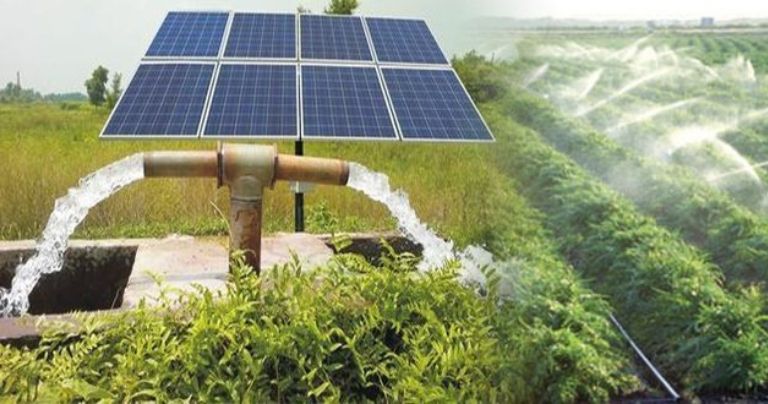Building a sustainable ecosystem in India with solar PV
By EPR Magazine Editorial November 14, 2021 12:17 pm IST
By EPR Magazine Editorial November 14, 2021 12:17 pm IST

This article provides a brief view about the present market scenario for solar PV manufacturers in India. It further walks us through the details pertaining to challenges and opportunities for increasing localisation in solar PV.
Present market demand scenario of Solar PV in India
The solar PV segment dominated the market share in 2020, and it is expected to be the largest segment during the forecast period, owing to supportive government policies to develop clean energy generation in the country’s energy mix.
India has an abundance of solar irradiance and receives solar energy throughout the year. This has created enormous opportunities to exploit solar energy from the sunniest sites in the country, especially Rajasthan, Gujarat, and Andhra Pradesh. The factor mentioned above, clubbed with foreign investment and extensive R&D projects, and provides an opportunity for the growth of the solar energy market in India.
The government of India has taken several initiatives with the Ministry of New and Renewable Energy (MNRE), drafting plans and putting out tenders, which, in turn, is expected to drive the market during the forecast period.
Opportunities and challenges for Solar PV sector in India
High manufacturing costs: Due to the high cost of solar power generation, a lot of the premium equipment used in a solar power plant had to be imported. The high module prices, along with other teething problems such as central and state policies and land issues contributed 92 NOVEMBER 2021 to the slow growth of the solar industry. It was from the year 2014 that there was a noticeable growth in the solar industry, thanks to the reducing cost of equipment owing to equipment used by Indian manufacturers. However, trying to compete with China’s strong manufacturing base still poses a huge challenge.
Waste management: Any growing industry will produce waste and solar is no exception. Even though solar modules and other equipment have a life of about 25 odd years, the modules do get damaged and need to be disposed of. This contributes to the solar waste in the country. Currently, India does not have a solar waste disposal policy and needs one on the lines of e-waste, where the guidelines are set for proper disposal or recycling of waste generated by the solar industry.
Land availability: One of the biggest challenges in the solar sector is the availability of land. Solar PV plants require a large amount of contiguous land to set up. This is particularly challenging in a country like India, given the land ownership issues, local politics and terrains.
Financing mechanism: In order to give a much-needed push to a growing industry, there needs to be a well thought out set of mechanisms that can generate the required cash flow to sustain it. One such mechanism is the green bonds and green climate fund that were set up in India and have already seen transactions worth $ 10.3 billion (2019). More such bonds are needed to ensure that the industry reaches a financially viable position.
India has medium-scale plants of 0.5-1 GW capacity, while plants in China have capacities of three-five GW, thereby providing a huge advantage in cost reduction. Firms in India are provided loans with an interest rate of 10-13 per cent with shorter return periods, whereas only 0-0.5 per cent of interest along with long tenures are provided by China. The industry requires more facilitating policies for acquiring land, innovative financing models and clarity on the custom duty structures for the solar manufacturers in developing a sustainable eco-system in the country and strengthening their position in the global market.
The ‘Make in India’ initiative has been in focus and adopted by various industries for some time now. However, as global businesses look to diversify their supply chains, the spotlight is back on the government’s ‘Atmanirbhar Bharat’ (Self-Reliant India) campaign.
Benefit to customers
Benefit to companiesLocal manufacturing enables a great deal of flexibility which allows cost efficiencies, control over quality, faster turn-around times in terms of production, transportation, deliveries, etc. Additionally, localisation can not only save production costs but can also cut down logistics costs and delivery times. Manufacturing locally helps India’s industries grow and its talent pool to develop specialised skill sets. Such scale and diversity drive companies to innovate.
Localisation can be the gateway to further opportunities such as export growth, import-substitution, and contract manufacturing. Developing economies of scale, focusing on quality, maintenance of foreign country compliances, investment in R&D and technology, and right pricing can help accelerate India to a new level of competitiveness and scale.
Benefit to the country
The benefits of localisation at the country level are multifold. First, it helps to boost the economy and the lives of people. India has the world’s largest population of youth at an employable age. This makes for a great opportunity for the country to supply a workforce to its industries.
Localisation-benefiting the vertical transport industry
As cities continue to expand and infrastructure proliferates, elevators and escalators are a main part of the narrative. To support this demand for elevators and escalators, major industry players have turned towards strengthening their localisation.
Panelstack’s AI-assisted intelligent solar sales and design platform can assist in solar site modelling and load profiling. This software also prepares shade analysis, loss analysis, and system metrics such as annual production, monthly production, performance ratio, and specific generation. This software also aids in sales and financial proposals, allowing users to predict financial savings and the term of return on investment. We are giving technology breakthroughs that make site design and analysis considerably more reliable and trustworthy in this era when the solar energy business is on the rise. This serves as a symbol of trust for both our customers who use this AI-assisted software and us. So come along with us on this incredible journey towards a solar-centric future!

We use cookies to personalize your experience. By continuing to visit this website you agree to our Terms & Conditions, Privacy Policy and Cookie Policy.